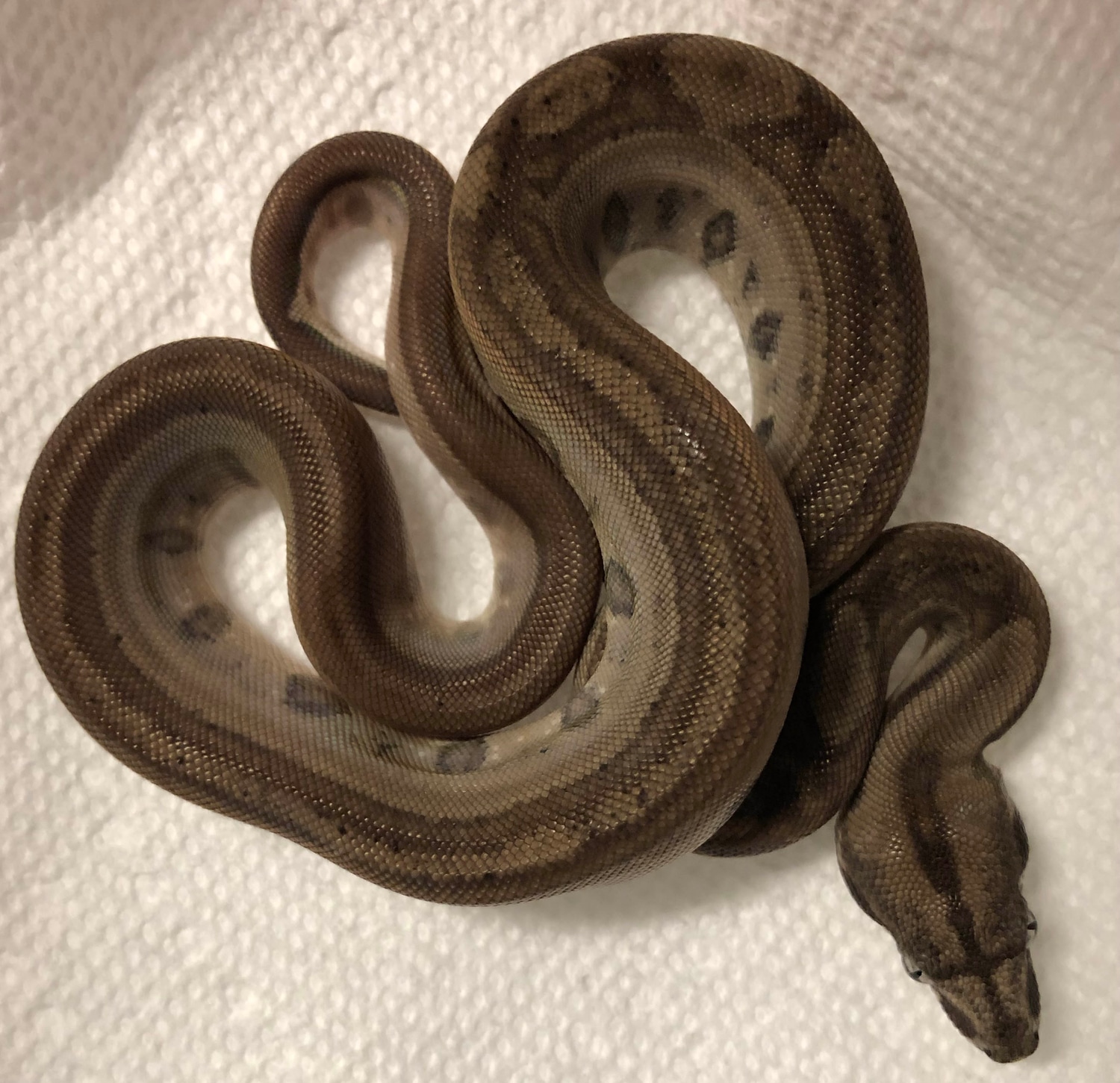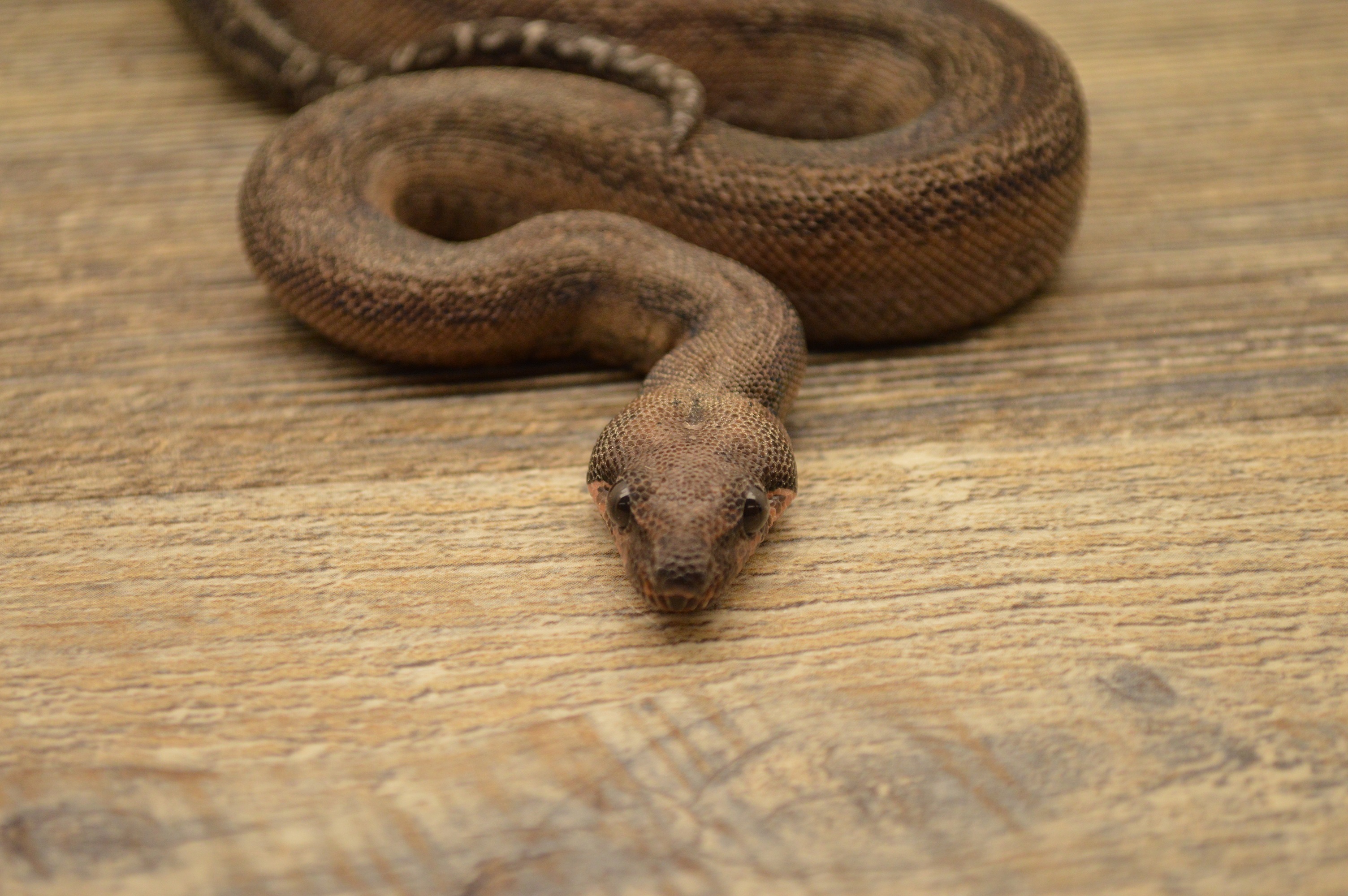Onyx
Type: Incomplete Dominant
First Produced By: Freek Nuyt
Complex: Leopard Complex
Issues: Digestion Issues
First Produced In: 2008
Availability: Rarest
Last Updated: 2023-01-19
Do you have any suggestions or corrections for this article?
Click here to contribute feedback
About
Onyx is an incomplete dominant mutation originating from Honduran mainland boas. The single gene form (Onyx) is a highly abberrant boa. The Superform (homozygous) is the Super Onyx - a solid black boa. [1]
Issues
History
ONYX BOAS: THE FULL STORY
The first ones were born from breeding a visual Honduran T+ male to a 66% poss. het. T+ female, which were F1 descendants of the original wild caught parents that came in from Honduras and produced the first T+ Albino from this line, making them also pure Honduran. Over time I purchased nearly all the offspring that were produced from this line and noticed that from the respective litters, some of the babies had a distinct pattern that set them apart from the rest, indicating to me that there might be something more going on with them genetically speaking. In 2007, I paired a T+ Albino with a 66% het female both carrying the same traits, at best hoping the female would prove to be an actual het and produce some nice T+ for me.
On July 9th, the female gave birth to a healthy litter. I slowly opened the bin to see if there were any T+ born, but the female quickly made me change my mind as she wasn’t too happy with me trying to get a look at her litter. I did see something dark in the litter but left them alone untill the female was completely done.
I checked again nearly an hour later as the suspense was killing me and I was completely blown away by what I looked at.
The pattern abnormality did indeed prove out to be a marker for a separate genetic trait and I was looking at a brand new mutation, the Onyx boa.
The Onyx born in the litter were built exactly as the parents as babies and the rest of the babies in the litter. They had no pinheads or the bulging eyes we see in the super Motleys, and never skipped a meal since they started feeding. They have all been problem free and matured nicely. There was one male Onyx in the litter and at 18 months of age, he is actively courting and breeding a nice female.
In 2009, I produced some more Onyx from a different female and had this little gem born. This litter also confirmed my beliefs that there was a third gene at work with these boas, showing that although progress has been made to fully understand the genetics of these boas, the project is still young and hopefully results in 2010 will give more insight in what is going on with the Onyx gene and help unravel what the full potential of the Onyx gene is.
UPDATE 2010, A THIRD GENE!
The third gene involved is a Hypo gene, which is a naturally occuring gene in these Honduran boas. I suspected this already in the first Onyx litter. You can clearly see the difference between the normal and the Hypos, confirmed by the first Sunglow Onyx that was born here last year. This year saw several Hypos in different litters and even had a, what I believe to be, Super Sunglow Onyx in a litter from breeding a Hypo Super Onyx (het T+) to a Hypo het T+, which would also make these Hypos co-dominant.
It also again confirmed three things - first, that the first Super Onyx male born here is actually a Hypo Super Onyx, which I suspected, as this one was much lighter in color than the other Super Onyx born alongside him. He also matured into a much lighter color then the other Super Onyx, but at the time it wasn’t confirmed as I had very little to compare him to and it could just as well have been a variation in color in the Super Onyx, so I had to wait until he was breeding and I got a litter from him.
Second, the female was a normal Honduran Hypo het T+. The litter contained not a single Super Onyx, but instead all Onyx, which is also confirmation that the Onyx trait is indeed a co-dominant trait.
Third, and definately very important, the Supers definitely breed and are viable.
I also bred a Sunglow Onyx into another morph. Besides this being another completely unrelated breeding, it again confirmed the Hypo gene and the Onyx gene being co-dominant, but it also produced a completely new designer, both in the normal form as well as in the Hypo form, in combination with the Onyx. For now, I will not disclose the details and pics on this one, these will follow later this year. All I can say is stay tuned as these new guys rock!
UPDATE 2011, PROVING THE GENETICS AGAIN.
I did several Onyx breedings again this year, some repeat breedings and some fully unrelated breedings to further establish the genetics and compare the results from the previous years to see if they match up to the results in the repeat breedings, as well as in the unrelated breedings, both in combination with Super Onyx, as well as in combination with Onyx. Needless to say, but as expected, the results from these breedings all matched up with the results from previous years, proving again the co-dominant genetics of the Onyx mutation.
First litter was from breeding a T+ Sunglow Onyx to a proven Onyx het T+ female. The female produced a small litter, but the odds were great, and although no Super Onyx were produced, the Red Barons in the litter more than compensated for that!
First litter to follow this one was from a Hypo Super Onyx het T+ to an Onyx het T+ female. Sadly enough, she went early, producing one premature baby and a bunch of slugs. The same male was also paired up with an unrelated Hypo 50% poss het T+ female. This virgin female produced a beautiful all Onyx litter with Hypo Onyx (poss. Super), Onyx, Sunglow Onyx (poss. Super) and T+ Onyx. The results in this litter matched up with a previous litter I had from a different female last year. Besides this, the female luckily proved out to be an actual het.
Another pairing was from a T+ Sunglow Onyx x Hypo het T+ female. This female dropped a fantastic litter again with (poss. Super) Sunglow Onyx, (poss Super) Hypo Onyx, Onyx, T+ (Sunglow) Hondurans and het (Hypo) T+ Hondurans.
Looking at the results in these litters in combination with last year’s results, the Super Sunglow/Super Hypo (Onyx) seem visually very different than the regular Sunglow/Hypo. They are much lighter in color. I hope to prove this in the future. [2]
Appearance
Body
The Onyx boa project is a unique Central American dwarf boa gene that adds striping to the tail and darkens the pattern. The Super Onyx is a solid black colored snake (with hints of diffused pattern). [3]
Proven Lines
No known proven lines
Combos
Red Baron (Honduran T+ Super Onyx)
Black Baron (Honduran Increased Melanin Gene (HIMG) T+ Super Onyx)

Super Onyx Boa Constrictor by Freek Nuyt / FNReptiles

Hypo Onyx Leopard Het. Honduran T Boa Constrictor by Boidenzucht Wolfgang Buchhorn

Hypo Onyx Leopard Het. Honduran T+ Boa Constrictor by Boidenzucht Wolfgang Buchhorn

Red Baron Boa Constrictor by Freek Nuyt / FNReptiles

Onxy Ghost 66% Het-Blood Het- T+ Boa Constrictor by Palumbo's Pythons & Boas





